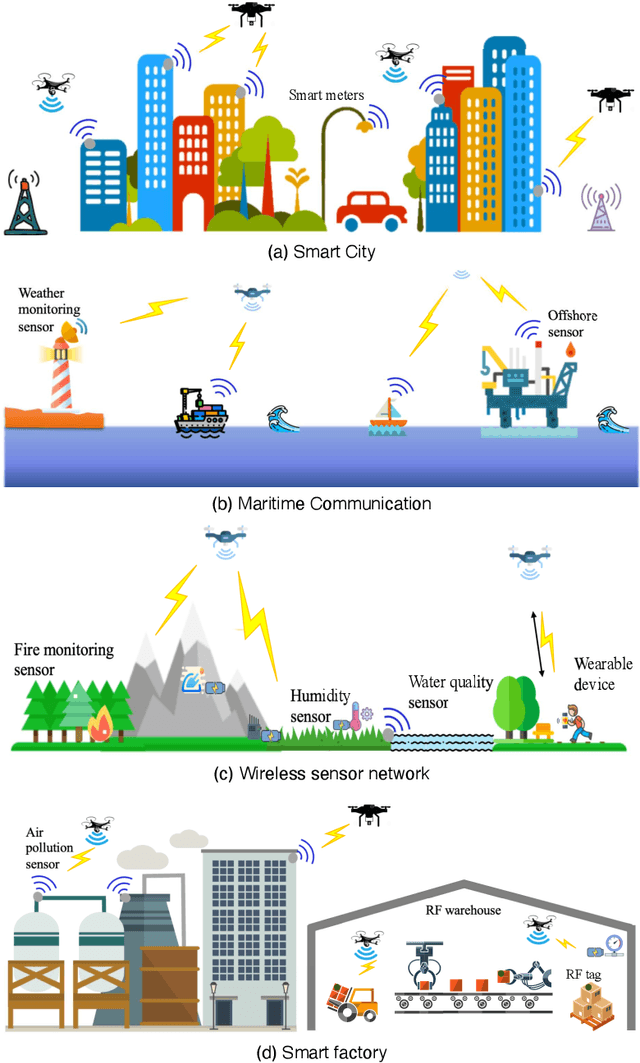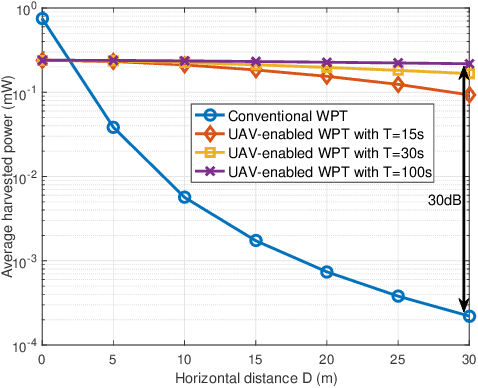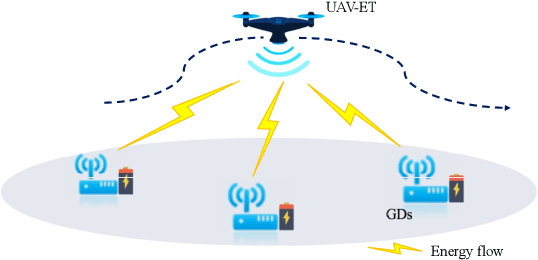UAV-Enabled Wireless Power Transfer: A Tutorial Overview
Paper and Code
Feb 27, 2021



Unmanned aerial vehicle (UAV)-enabled wireless power transfer (WPT) has recently emerged as a promising technique to provide sustainable energy supply for widely distributed low-power ground devices (GDs) in large-scale wireless networks. Compared with the energy transmitters (ETs) in conventional WPT systems which are deployed at fixed locations, UAV-mounted aerial ETs can fly flexibly in the three-dimensional (3D) space to charge nearby GDs more efficiently. This paper provides a tutorial overview on UAV-enabled WPT and its appealing applications, in particular focusing on how to exploit UAVs' controllable mobility via their 3D trajectory design to maximize the amounts of energy transferred to all GDs in a wireless network with fairness. First, we consider the single-UAV-enabled WPT scenario with one UAV wirelessly charging multiple GDs at known locations. To solve the energy maximization problem in this case, we present a general trajectory design framework consisting of three innovative approaches to optimize the UAV trajectory, which are multi-location hovering, successive-hover-and-fly, and time-quantization-based optimization, respectively. Next, we consider the multi-UAV-enabled WPT scenario where multiple UAVs cooperatively charge many GDs in a large area. Building upon the single-UAV trajectory design, we propose two efficient schemes to jointly optimize multiple UAVs' trajectories, based on the principles of UAV swarming and GD clustering, respectively. Furthermore, we consider two important extensions of UAV-enabled WPT, namely UAV-enabled wireless powered communication networks (WPCN) and UAV-enabled wireless powered mobile edge computing (MEC).
 Add to Chrome
Add to Chrome Add to Firefox
Add to Firefox Add to Edge
Add to Edge